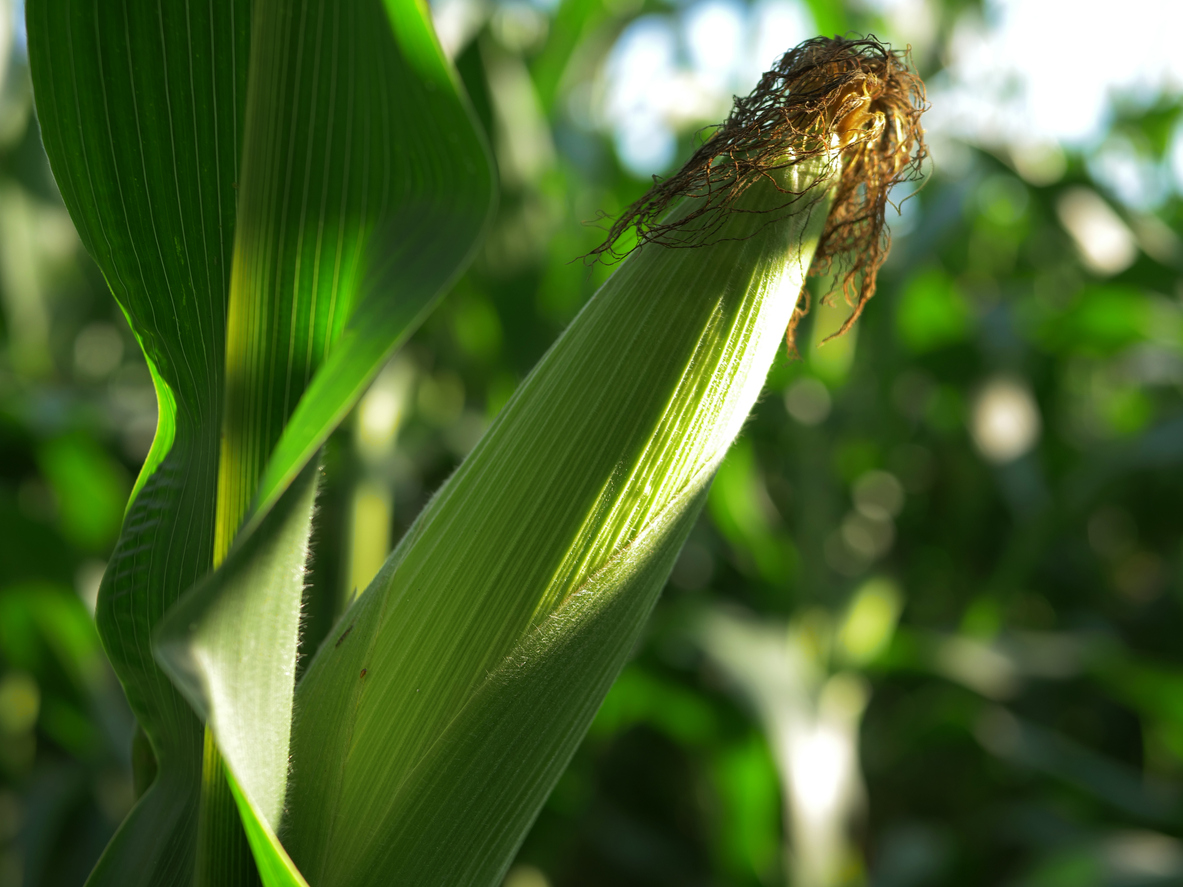Corn Vomitoxin
In between rains, farmers are harvesting corn. Due to cooler temperatures, Canada smoke, and fewer growing degree days; moisture levels in corn are wetter than normal. August rains also promoted Gibberella (GIB) ear rot or vomitoxin. Vomitoxin levels above 5 PPM can not be fed to hogs and some elevators are reporting 6-10 ppm or higher. Farmers are getting charged discounts for both vomitoxin and high moisture which lowers the price. Farmers also cannot deliver high vomitoxin corn for ethanol because it concentrates vomitoxin levels in the distilled grains (DDGs) which are fed to livestock. Elevators often mix good grain with poor grain to dilute the vomitoxin levels to an acceptable level. Michigan seems to have more vomitoxin issues than Ohio.
GIB is caused by Fusarium graminearum, a fungus that is also called Gibberella zeae. This pathogen infects corn and wheat causing ear rot, stalk rot, and head scab. Corn symptoms include a reddish or pinkish-white mold on the ear tips which is a toxin. The pathogen over-winters on plant residue, usually corn stalks/leaves and wheat residue (straw and chaff).
GIB ear rot is most prevalent when cool wet weather occurs for about 21 days after silking. Fields most susceptible are corn after corn or corn after wheat, especially if the wheat was infected with Fusarium head scab. Corn that is stressed from lack of nutrients, by insects, or other types of plant stress (soil compaction, poor soil health) tend to have higher levels of GIB ear rot. Some corn varieties, when they start to dry, keep their husk upright which can allow moisture to accumulate at the ear tip. Other corn varieties, hang down which is better for getting moisture out, as long as the ear stays in the husk and does not drop out.
Adequate nutrient availability may play a role. Nutrient stress include a lack of nitrogen (N), phosphorus (P), and potassium (K) imbalances. High N with low K is often associated with higher levels of GIB ear rot. Nitrogen fertilization in the form of ammonia and adequate levels of P may decrease GIB ear rot. In corn, about 50% of P is absorbed by plant roots after plants start the reproductive phase. Another element that helps reduce GIB ear rot is chlorine (Cl). A good source of fertilizer is potassium chloride (KCL) to help fight this pathogen. The Cl also makes manganese more plant available to help the plant fight the pathogen (Mineral Nutrition and Plant Disease, 2018).
To reduce GIB ear rot before it occurs, follow these guidelines. Good crop rotation is your first step. Avoid planting corn or wheat after fields that show signs of this infection. Good soil health and fast residue decay are needed to reduce level of the pathogen. Ideally, at least 80% of your residue (wheat or corn) should be decayed by planting time. Crop residue decay is dependent upon adequate soil moisture, soil temperature (above 500F), adequate microbial activity (mycorrhizae fungus for lignin breakdown), and good macrofauna (springtails, mites, earthworms, etc.) that breakdown the crop residue into smaller pieces. Overuse of soil insecticides may reduce crop residue decay.
Farmers can also select crop varieties that are somewhat resistant to GIB ear rot. Earlier maturing corn varieties have more time for crop residue to break down in the fall. Also, planting a cover crop, not only improves soil health and increases beneficial soil microbes, it also creates a micro-environment (warmer, higher moisture) where crop residues may decay faster. Cover crops also reduce soil compaction and may help balance soil nutrients (N-P-K-Cl).
Purdue Extension offers these harvest tips: Harvest high GIB ear rot corn fields separately and as quickly as possible. Fines and smalls hold more GIB ear rot pathogen, so adjust the combine to reduce this source of infection. Grain moisture above 22% moisture and 800F increases mold developments, with cooler temperatures and lower moisture decreasing the spread. In field, moisture levels below 18% stop mold development. Some farmers run the vomitoxin infected grain through a blower to separate out fines before loading to reduce vomitoxin levels.
OSU Extension (Dr. Paul Pierce) offers these storage tips: 1) Dry harvested grain to 15% moisture and below to prevent further mold development in storage. 2) Store dried grain at cool temperatures (36 to 440 F) in clean, dry bins. Moderate to high temperatures are favorable for fungal growth and toxin production. 3) Periodically check grain for mold, insects, and temperature, and send grain samples for mycotoxin analysis. 4) Avoid storing severely affected grain for too long especially since it becomes much more difficult to keep grain cool and dry as outside temperatures increase going into next spring and summer.
